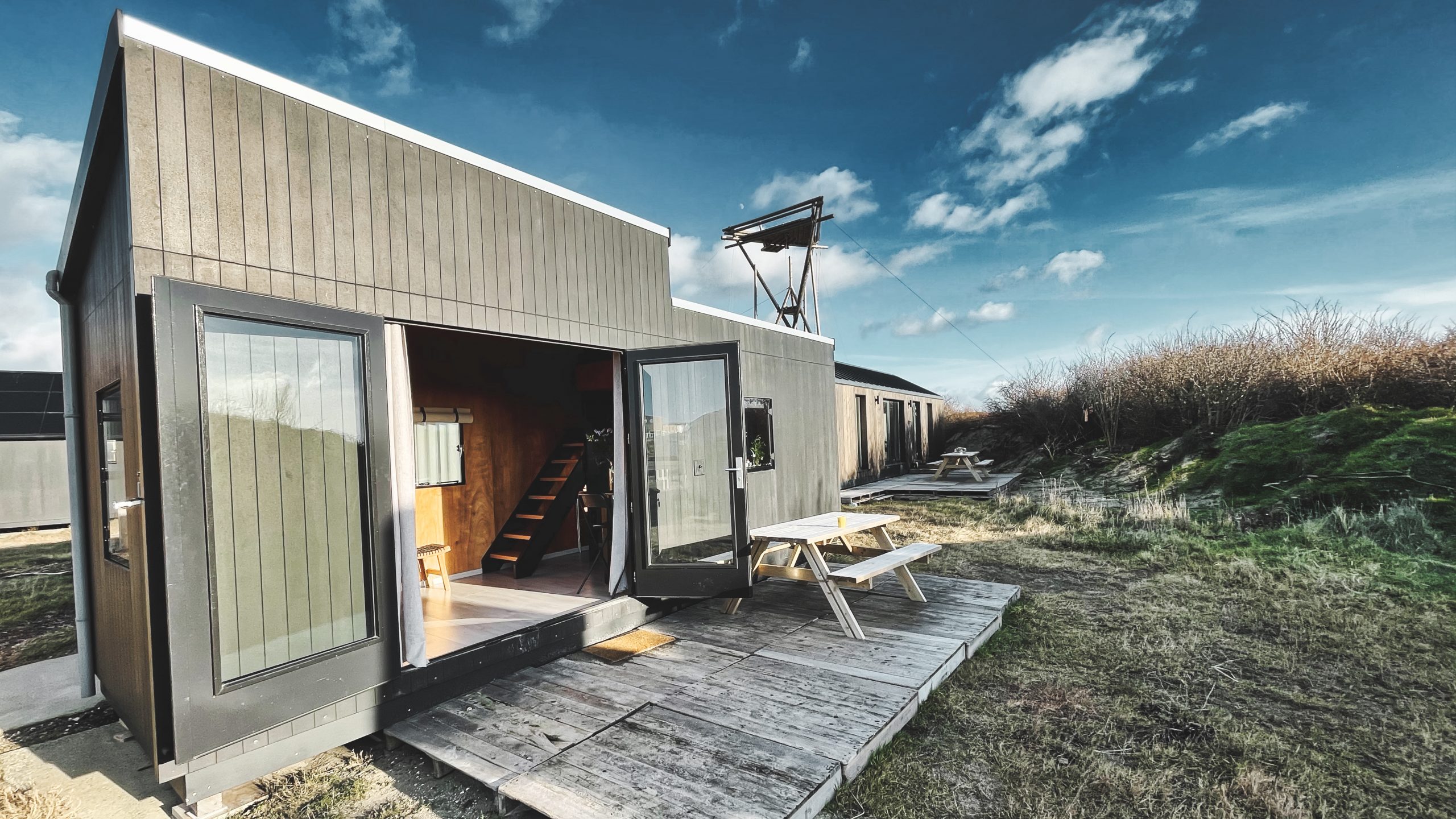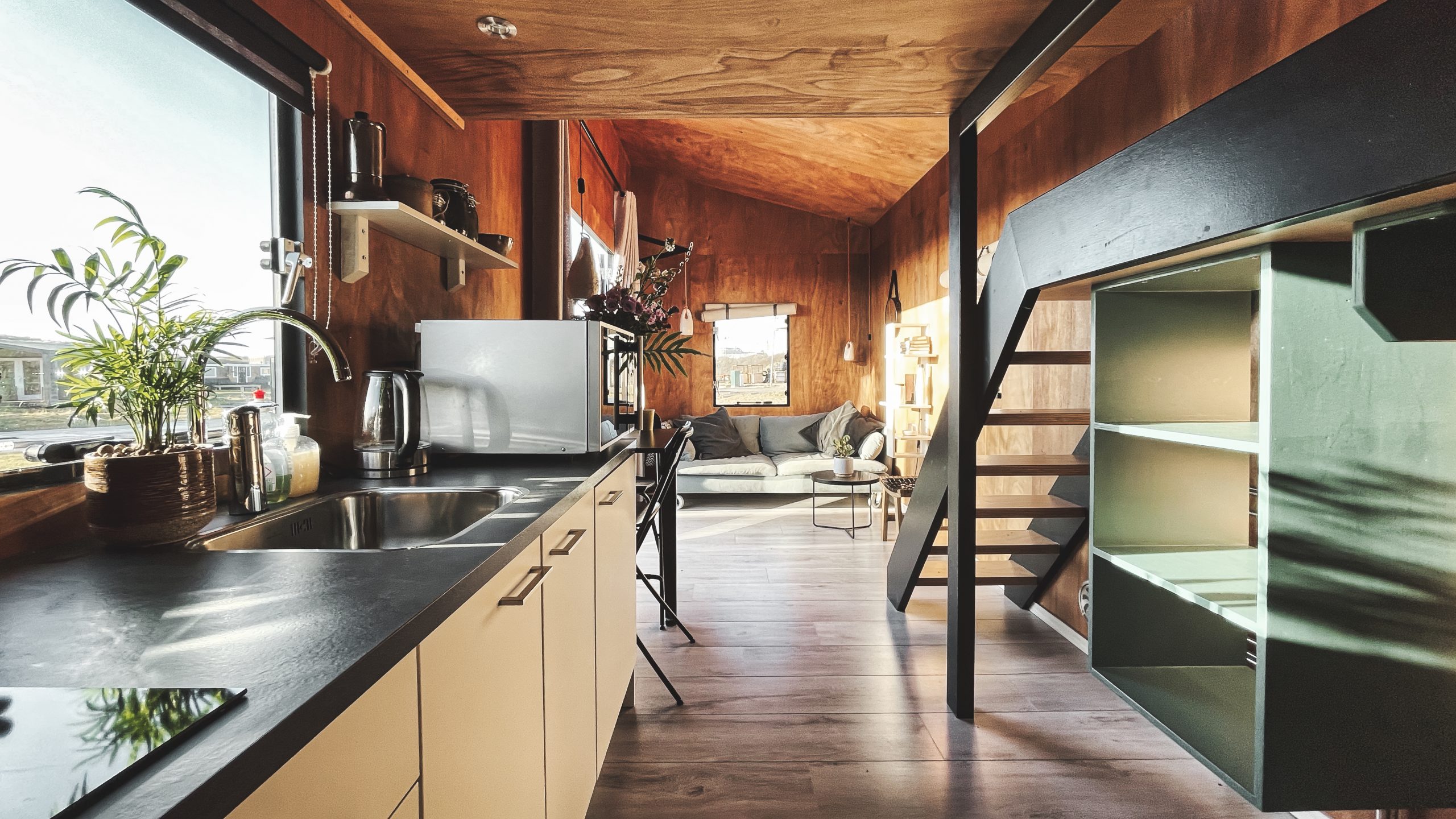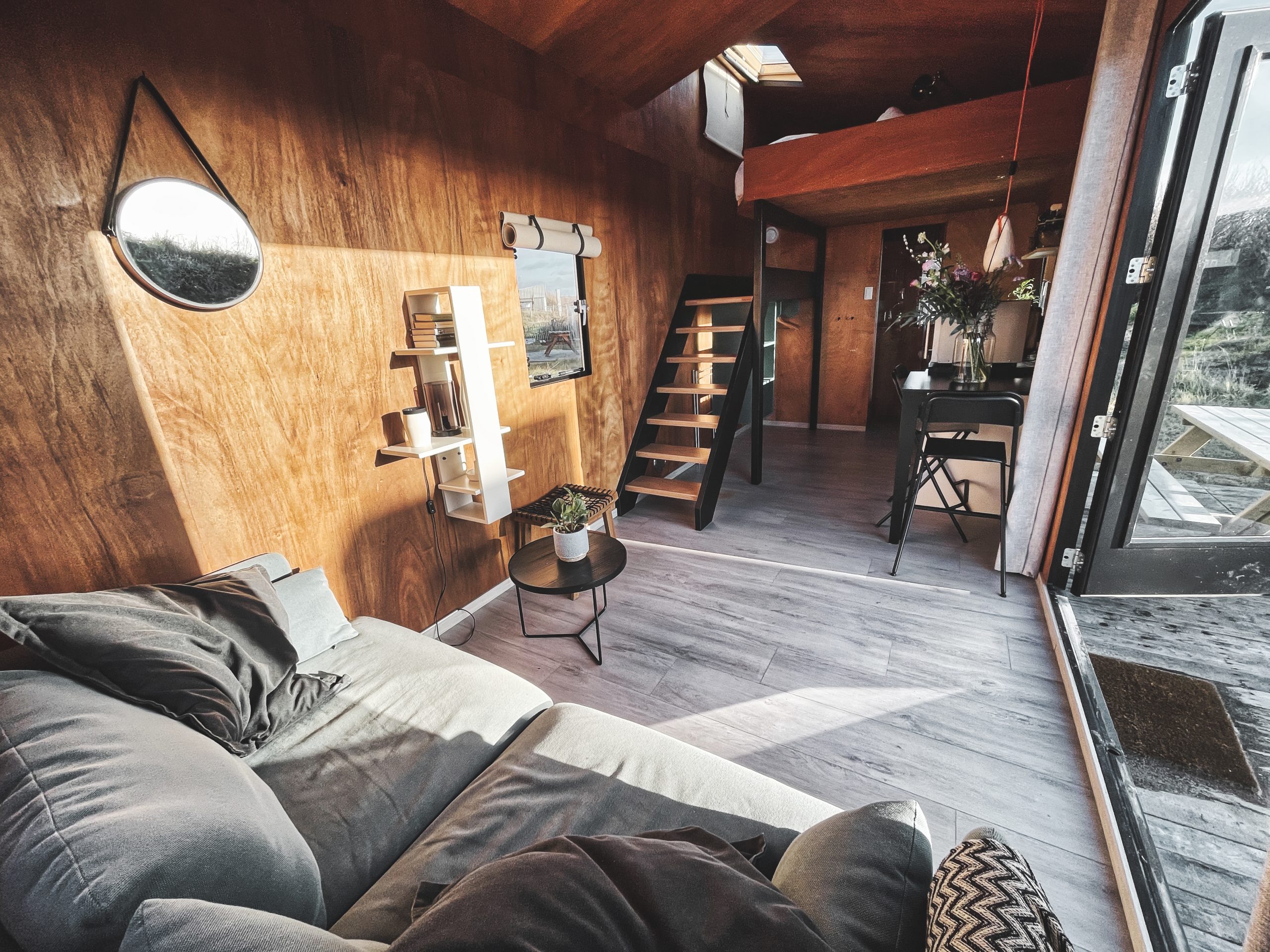You may have noticed that lifestyles including minimalism, low-waste, van-life, and tiny house living have been on the rise in recent years. If you have, you are not alone. It seems to be everywhere on social media. If you’re reading this, you have likely stumbled upon a 20-something year old’s Instagram page, where they share a combination of these lifestyles as a way to document their journey and inspire others to explore new ways of living.
But, why are so many millennials turning to these lifestyles? What is driving them? And, what are the benefits? Before we dive in, let’s break down a few keywords that will be used throughout this post.

The Millhome Nomad at Basecamp IJmuiden
Minimalism: a way of life that aims to keep personal possessions at a minimum; only purchasing items that are of essential value, or can be used for a variety of purposes. It is often used as a way to save money, space, and personal time; as less things equals less mess, which equals less time spent cleaning and decluttering.
Zero-Waste: a lifestyle choice that aims to purchase less single-use products in the hopes of generating less waste. Only essential, reusable, upcycled, and carefully crafted items are used in this lifestyle. Often, this lifestyle is chosen out of environmental concern, but is also popular for those practicing minimalism and looking to save money.
Tiny Home Living: typically, tiny homes are between 10 and 40 square meters, but there isn’t one set standard. Inhabitants usually choose this lifestyle in conjunction with minimalism and zero waste living to save money and for environmental concerns.
Now that we have explained the keywords, let’s dive into the real, deep reasons why more and more millennials are turning to alternative living methods. You may relate to one of them. If you do, it might be time for you to consider a “tinier” lifestyle.
Tiny, but no compromises in comfort.
1. Challenging Social Norms and Expectations
Simply stated, many millennials have different ideas of what it means to be: free, happy, and successful.
Millennials learned quickly through their upbringing that in order to be successful outwardly in society, you need an impressive home, a competitive job, a stacked bank account, and a cookie-cutter family. Then, they decided to challenge those ideas and values, knowing there must be more to life.
Millennials want to work smarter, not harder. They prefer time and financial freedoms, instead of constant productivity in order to secure their place to live, and their permission to enjoy their lives.
Millennials are also having less children, and later in life, compared to the generations before them. This gives them more freedom to design their ideal living situations before starting a family. Although, many have proven successful at transitioning their families to tiny home living.
2. Increased Socio-Economic Burdens
Millennials have quickly picked up on economic factors that can easily slash your chances of being a homeowner, having a padded back account, and being successful through traditional lenses. Factors like student debt, of which millennials carry between the ages of 25 and 34 years, an average of about €33,000.(3) Can you relate?
Factors like the housing market and applying for a mortgage, which continue to favor older cohorts with more financial history and credit. One study found that nearly 40% of millennials are currently living at home with their parents due to the rising cost of housing, poor job prospects, low paying wages and high student debt.(4)
For these individuals, tiny home living can be a literal way out. Once a tiny home is secured either through purchase or build, its monthly maintenance fees and utilities (depending on the season) can be expected to stay below €500. Compare that to upwards of €1500 or more for rental properties and the average mortgage payment.
3. Environmentalism
Environmentalism, minimalism, and zero-waste living all relate to each other. Millennials have proven to be one of, if not the most enviro-conscious generations. Millennials concerned with climate change and global warming look to tiny home living as a way to downsize utility costs while lowering their environmental impact.
A tiny house produces 2530 kg (5,578 pounds) less CO2 yearly than the average house. Additionally, tiny homes lower the greenhouse effect by 36%(2), the available tiny house statistics show. When you live in a small space, zero-waste living can help one retain space, time, money, and fulfill environmental goals.
Minimalism doesn’t mean an empty house.
In summary, Millennials are choosing tiny home living as a way to better adapt to economic limitations, save money, and give a hand to the planet in the process. Millennials are aiming to inspire those around them to challenge their upbringings and what it truly means to be successful.
Tiny home living also offers Millennials a chance to become self-sufficient without breaking the bank, literally. Tiny homes can be purchased or built, depending on varying factors, for €25,000-€60,000.(2) Compare that to a typical mortgage loan, which averaged €320,000 in 2020.(5) If one is able to purchase reclaimed or recycled building materials, the cost for a tiny home plunges even further.
Sure, tiny home living may not be a lifelong goal, but it is a sound investment with low maintenance fees, the option to be mobile or fixed, and allows a more minimalist and environmental lifestyle. Many Millennials are open about their ability to purchase larger properties through the cost savings of tiny home living. In fact, 68% of individuals living in tiny homes actually own their houses, land, and are mortgage-free.(2) Plus, 55% of tiny home owners have more savings than their non tiny-home owning counterparts.(2) Wouldn’t you agree that is a pretty sweet picture of freedom?
If you like this article, spread the word by sharing it on Facebook or LinkedIn!
Sources


